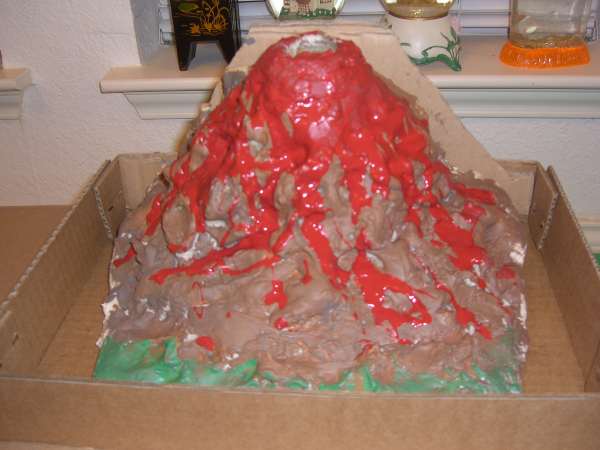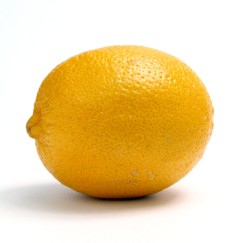- Syllabus Chemistry
- Curriculum Specification Form 4 Chemistry
- Curriculum Specification Form 5 Chemistry
- Concept Acids and Bases
- Strength of Acids and Alkalis
- Concentration of Acids and Alkalis
- Neutralisation
Make Your Own Volcano
20:06 |
![]()

- A volcano - Talk to an art teacher about making a volcano out of paper mache or plaster. You can also use clay or if you're in a hurry to make your volcano, use a mound of dirt outside.
- A container that 35mm film comes in or similar size container.
- Red and yellow food coloring (optional)
- Vinegar
- Liquid dish washing soap

- Go outside or prepare for some clean-up inside
- Put the container into the volcano at the top
- Add two spoonfuls of baking soda
- Add about a spoonful of dish soap
- Add about 5 drops each of the red and yellow food coloring
Now for the eruption!:
- Add about an ounce of the vinegar into the container and watch what your volcano come alive.


A VOLCANO is produced over thousands of years as heat a pressure build up. That aspect of a volcano is very difficult to recreate in a home experiment. However this volcano will give you an idea of what it might look like when a volcano erupts flowing lava. This is a classic experiment in which a CHEMICAL reaction can create the appearance of a PHYSICAL volcano eruption. You should look at pictures of volcanoes to be familiar with the different types. (A SHIELD volcano, for example is the most common kind of volcano, and yet few people know about them) The reaction will bubble up and flow down the side like a real volcano (only much faster!) Look for videos of volcanoes erupting and be sure that you understand how heat and pressure work to really make volcanoes erupt.
Lava In Cup
20:01 |
![]()


* A clear drinking glass
* 1/4 cup vegetable oil
* 1 teaspoon salt
* Water
* Food coloring (optional)

* 1/4 cup vegetable oil
* 1 teaspoon salt
* Water
* Food coloring (optional)

- Fill the glass about 3/4 full of water .
- Add about 5 drops of food coloring
- Slowly pour the vegetable oil into the glass. See how the oil floats on top - cool huh? It gets better.
- Now the fun part: Sprinkle the salt on top of the oil.
- Watch blobs of lava move up and down in your glass!
- If you liked that, add another teaspoon of salt to keep the effect going.

So what's going on? Of course, it's not real lava but it does look a bit like a lava lamp your parents may have had. First of all, the oil floats on top of the water because it is lighter than the water. Since the salt is heavier than oil, it sinks down into the water and takes some oil with it, but then the salt dissolves and back up goes the oil! Pretty cool huh?
Make Lemonade Fizzy Drink
19:59 |
There's a lot of
people out there that like drinking fizzy drinks, so why not do a fun
science experiment that leaves you with your own lemon soda to drink
afterwards!
A bit of lemon here
and a bit of baking soda there and before you know it you'll be an
expert at making your own fizzy drinks. Make your own lemonade softdrink
with this fun experiment for kids.
What you'll need:

- Lemon
- Drinking glass
- Water
- 1 teaspoon of baking soda
- Some sugar to make it sweet
Instructions:
- Squeeze as much of the juice from the lemon as you can into the glass.
- Pour in an equal amount of water as lemon juice.
- Stir in the teaspoon of baking soda.
- Give the mixture a taste and add in some sugar if you think it needs to be sweeter.
What's happening?
The mixture you
created should go bubbly and taste like a lemonade, soda, fizzy or soft
drink, if you added some sugar it might even taste like a lemon
flavoured soft drink you've bought at a store. The bubbles that form
when you add the baking soda to the lemon mixture are carbon dioxide
(CO2), these are the same bubbles you'll find in proper fizzy drinks. Of
course they add a few other flavored sweeteners but it's not much
different to what you made. If you are wondering how the carbon dioxide
bubbles formed, it was because you created a chemical reaction when you
added the lemon (an acid) to the baking soda (a base).
09:01 |
Exercise 3
Here is the Exercise 3, you can just click the link below to get the questions.
This link is the answer of the Exercise 3
Subscribe to:
Posts (Atom)

.JPG)





.jpg)
